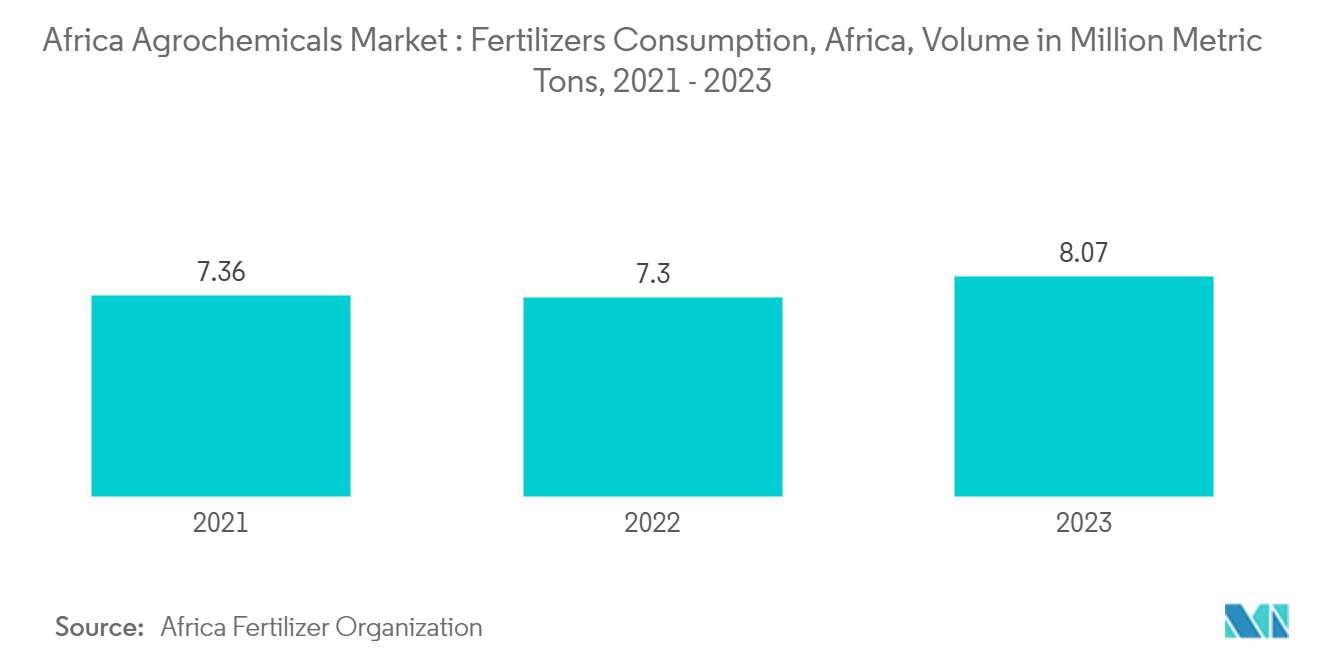Market Trends of Africa Agrochemicals Industry
Growing Food Demand With Population Growth
- Africa's rural population is steadily increasing. According to World Bank data, from 2020 to 2023, Sub-Saharan Africa's rural population grew by 5%, averaging an annual growth rate of 1.6%. This rising population is intensifying the demand for agricultural land. A, 2023 report from AGRA (Alliance for a Green Revolution in Africa) cautions that by 2030, Africa's burgeoning population may face a food scarcity crisis, jeopardizing nutrition and health. Smallholder farmers, who account for 80% of the continent's food production, are under pressure to enhance their yields. Consequently, many are turning to increased use of pesticides and agrochemicals. Notably, the Food and Agricultural Organization reported a rise in severely food-insecure individuals from 305 million in 2020 to 341.8 million in 2022, underscoring the critical nature of food production on the continent.
- By 2050, Africa's food demand is set to more than double, aligning with a projected population of 2.5 billion, as highlighted by the International Monetary Fund. This demand surge is driven by population growth, rising incomes, swift urbanization, and a regional shift towards premium fresh and processed foods. Such increasing demand not only presents fresh opportunities for African farmers but also accelerates the adoption of pesticides in agriculture. To tackle the continent's food security challenges, organizations like the G8's New Alliance for Food Security and Nutrition, alongside AGRA, are intensifying their efforts.

Need for Improving Land Productivity and Government Initiatives
- As Africa's population grows, so does its demand for food. Yet, the continent grapples with a challenge, its limited arable land can't keep pace with this surging demand. Africa holds 60% of the world's uncultivated arable land, yet its primary cereal crops yield less than 25% of their potential. In some areas, transboundary pests and diseases further dampen agricultural productivity. These stagnant yields intensify challenges like food insecurity, poverty, and malnutrition, especially as the population continues to swell. Alarmingly, the harvested area for crucial crops, including maize, is shrinking. FAO data reveals this concerning trend: maize harvesting fell from 42.9 million hectares in 2021 to 41.7 million hectares in 2022. Such patterns highlight the urgent need to enhance land productivity.
- In response to these challenges, both national and international governments are rallying to assist small and marginal farmers. For instance in Kenya, a World Bank initiative is rolling out fertilizer e-voucher subsidies, enabling eligible farmers to purchase fertilizer at discounted rates from private retailers. This initiative has not only spurred a productivity boost of over 50% but has also championed crop diversification and bolstered the private sector. Looking ahead, the African Development Bank paints an optimistic picture, Africa's food and agriculture market, valued at USD 280 billion in 2023, is projected to leap to a staggering USD 1 trillion by 2030. With these governmental interventions and the pressing demand for heightened agricultural productivity, Africa's agrochemical industry stands on the brink of substantial growth in the years to come.


